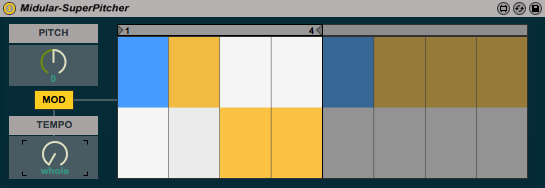Forget fancy effects or sophisticated plug-ins – day-in, day-out, it’s those simple MIDI modules you wind up using again and again and again and again. It’s like having a bucket of paperclips on your desk. It doesn’t have to be exciting. It’s the simple stuff that gets used.
So, one of my favorite demos from the jam-packed sessions at MIDI Hack Day in Stockholm in May was unquestionably Midular. The idea was simple: make some basic modules that do stuff to notes and control events, then combine them in useful ways. It deserved an ovation.
And now, you can get those same modules for Max for Live, for free. They’re open source, properly under a GPL license (meaning, if you want to port them to Pure Data, you can, for instance). And they’re good enough that you’ll wonder with at least a couple of them why Ableton didn’t include these as defaults effects.
The starting lineup:
- LiveQuantizer. Well, duh. And as the creator notes, this means you can do to notes what Live does to clips.
- Repeater. Repeat incoming notes.
- Buffer. A round-robin note storage-and-playback sequencer – cool. And that naturally leads to –
- Rotator. 8-note rotating buffer plus an 8-step sequencer, based on the Roland System 100m modular sequencer. This is a no-brainer to add to that Roland SYSTEM-1 I’m dragging into the studio tonight, in fact, both in SYSTEM-1 and SH-101 modes – I’ll report back.
- SuperPitcher Works the way you wish Pitch did in Ableton – but then also adds a step-based modulator, for other effects.
It’d be great to see this collection grow over time, particularly with additions from others in the Max for Live community. You can start on that right away by forking it on GitHub – or just download and get to playing.
So, yes, fairly simple. It’s combining these (and, no doubt, communing them with other tools and toys from the Max for Live community) that gets more interesting. Some video examples:
A simple demonstration showing how some of the Midular MIDI effect modules can be used together, focusing on the 8 note step sequencer called Rotator. I’ve tried keeping the sounds and sequences as simple as possible so that it’s easy to get a feeling for what’s going on.
A simple demonstration of how some of the Midular MIDI effect modules can be used to generate various arpeggiated sequences from a single sustained note. The sound is purposefully kept as basic as possible so that it’s easier to hear what’s going on.
News item:
Introducing Midular, a set of MIDI effects built in Max for Live
The project is the work of Knut Andreas Ruud. Brilliant stuff, Knut!
https://github.com/carrierdown/m4l-midular (look for the “download ZIP” link in the right-hand column if you haven’t used GitHub before!)

